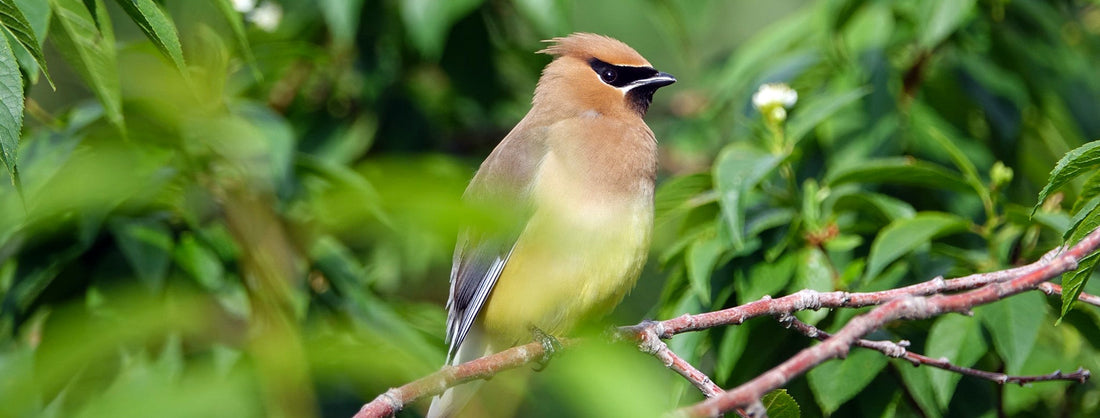
Controlling Weeds and Pests Without Chemicals
Share
The use of synthetic herbicides and pesticides has dominated the landscape and gardening industry for decades. A trip to the garden section of any department store usually reveals a wide array of chemical solutions for almost every perceived problem. But what’s causing these problems in the first place?
In many cases, these chemicals are treating the symptoms, not the cause.
If a plant is constantly under attack by pests, it’s often a sign that the plant is struggling. Why is it struggling?
- Is it growing in the right conditions?
- Is it hardy for your region?
- Is it especially attractive to a specific pest—and if so, do you really need that plant in your garden?
Often, the real solution is as simple as choosing hardier, better-suited plants and making sure their growing conditions support good health.
The Problem With Pesticides
Pesticides don’t discriminate between beneficial and harmful bugs. Many beneficial insects are predators with longer life cycles than the pests they feed on. So while pesticides may kill pests temporarily, they often kill off predators more effectively, allowing the pest population to rebound faster and stronger.
This same pattern applies to herbicides. Weedy plants germinate, flower, and go to seed quickly. Desirable plants, like native perennials, take much longer to complete that cycle. Repeated herbicide use favors fast-growing weeds by constantly knocking back slower-growing, long-lived species.
What Are We Really Gaining?
We use more herbicides and pesticides today than we did 50 years ago—yet we still have weeds and pests. So, what are we gaining?
We’ve been conditioned to believe chemicals are the quickest and easiest solution. But they offer short-term gain and long-term damage. These substances don’t disappear from the environment. They accumulate—affecting water, soil, wildlife, and us.
If you create a balanced, healthy landscape, you’ll often find your pest problems fade away on their own.
Natural Pest Control: Let the Food Chain Work for You
The food chain is one of the best tools we have. By inviting pest predators into your yard, you can reduce the need for intervention:
- Birds and beetles eat slugs, caterpillars, and aphids.
- Spiders are tireless insect hunters.
- Bats eat mosquitoes.
- Ladybugs can consume over 5,000 insects in a single lifetime.
Tips for Controlling Pests Naturally
- Start with healthy soil and choose plants well-suited to your site conditions. Consider exposure, water needs, and air circulation.
- Use native plants that are naturally pest- and disease-resistant.
-
Create habitat to welcome natural predators.
➤ Birdhouses, feeders, and water will encourage birds.
➤ Twigs, logs, and rocks offer shelter for beetles, ladybugs, and spiders. - Check out NatureScape Alberta by Myrna Pearman & Ted Pike for more ideas on creating wildlife-friendly yards. Get your kids involved!
-
Try homemade or natural pesticides using common household ingredients.
➤ Look to the internet, library, or gardening magazines for recipes. - Explore natural or organic remedies—these are increasingly available in garden centers.
Smart Weed Control Without Chemicals
Weeding is like housework—if you don’t keep up with it, it piles up fast. Left unchecked, weeds will spread rapidly. Disturbing the soil brings weed seeds to the surface, and weeds are always ready to grow. They aren’t going away, so the best approach is to make it difficult for them to thrive.
It also helps to know your opponent. There are two main types of weeds:
- Annual weeds, which grow and go to seed in one season
- Perennial weeds, which return year after year from roots or rhizomes
Non-Chemical Weed Control Tips
- Learn to identify the weeds in your yard, especially the most aggressive ones.
- Hand-dig perennial weeds, removing the full root. Learn what they look like when small—it makes weeding much easier.
- Hoe or cut down annual weeds before they go to seed.
- Pull weeds after a good rain—they come out more easily, even in gravel.
- Grip the base of the plant when pulling. If you pull too high, the stem may snap, leaving the root behind to regrow.
- Dig below the thorns on prickly weeds to get a firm, pain-free grip. If you can’t remove the root, keep cutting off the foliage until the plant exhausts itself.
- Smother problem areas with old carpet, cardboard, thick mulch, or black plastic. This may take a full season or more but is effective for areas overwhelmed with weeds or aggressive grasses.
- Remove topsoil if you want a truly plant-free zone. Replace with gravel, road crush, or pavers. Remember: where there is soil, there will be plants.
- Fill the space with desirable plants to create competition and eventually crowd out weeds.
- Experiment with natural herbicides, and if you find something that works—share the knowledge with others.
